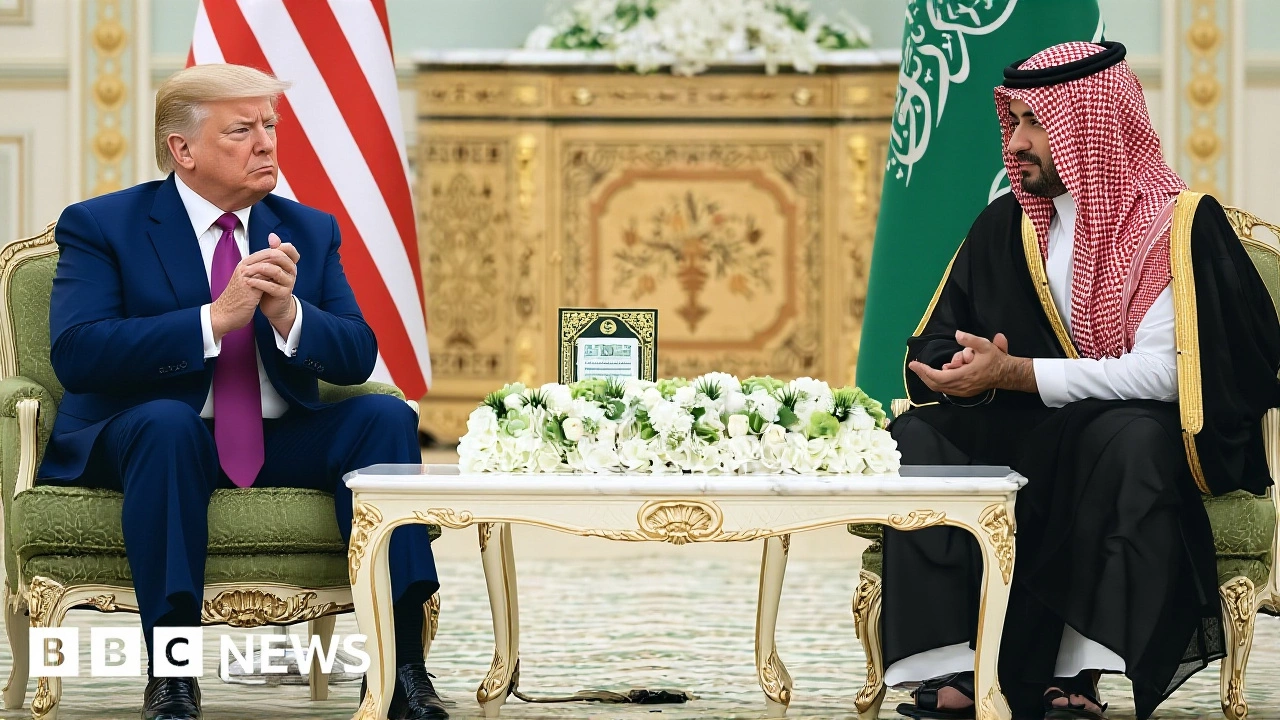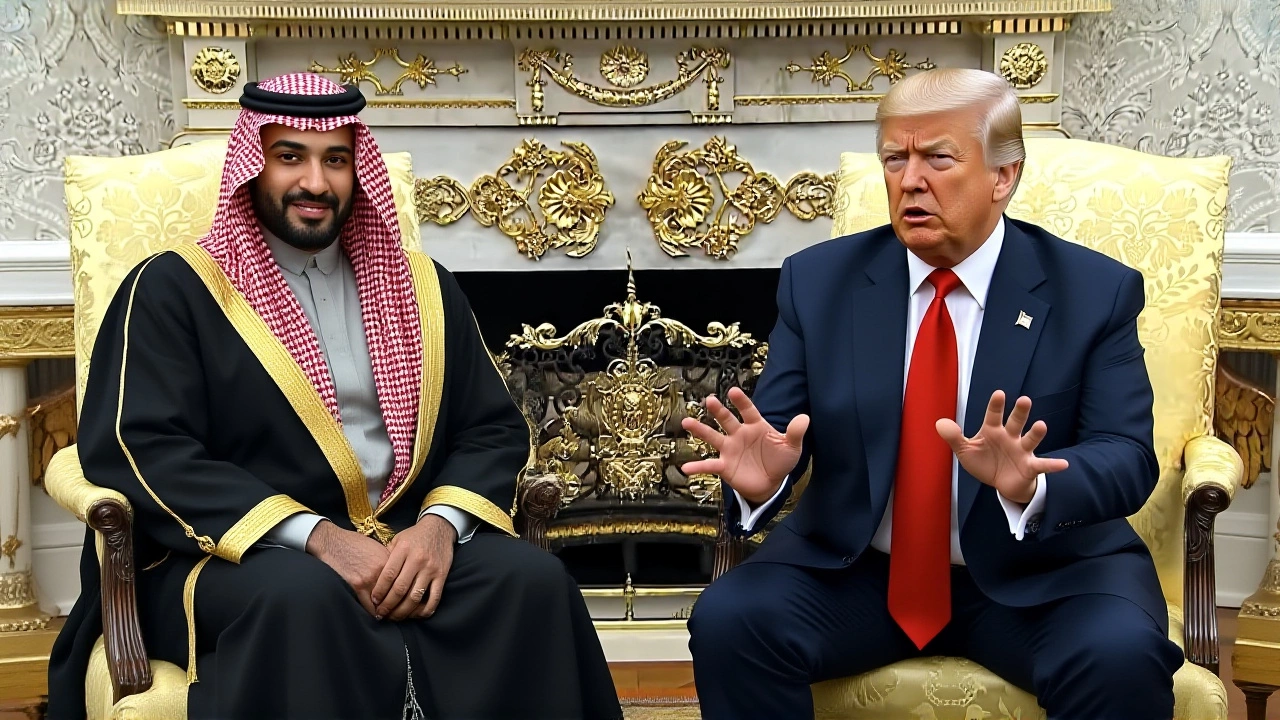Trump Announces F-35 Sale to Saudi Arabia, Signs Historic Defense Pact at White House

On November 20, 2025, President Donald J. Trump and Crown Prince Mohammed bin Salman bin Abdulaziz Al Saud of the Kingdom of Saudi Arabia sealed a landmark defense deal at the White House in Washington, D.C.—one that reshapes Middle East security, revives American defense manufacturing, and breaks decades of diplomatic precedent. The agreement includes the sale of F-35 fighter jets and nearly 300 M1 Abrams tanks, marking the most significant U.S.-Saudi defense advancement since the 1951 Mutual Defense Assistance Agreement. What’s striking isn’t just the scale—it’s the silence on Israel. For the first time, the U.S. refused to tie the F-35 sale to Saudi normalization with Israel, a policy shift that sends shockwaves through regional diplomacy.
A New Era in U.S.-Saudi Defense Ties
The U.S.-Saudi Strategic Defense Agreement White House wasn’t just signed—it was announced as a cornerstone of Trump’s "America First" agenda. According to the White House fact sheet, the pact secures "burden-sharing funds" from Saudi Arabia to offset U.S. military costs in the region, a move designed to reduce taxpayer burdens while expanding American defense industry access. The agreement also establishes joint U.S.-Saudi defense industrial working groups, set to launch within 90 days, to oversee technology transfers under strict U.S. export controls. This isn’t about weapons alone—it’s about building a shared industrial ecosystem. Lockheed Martin, the maker of the Lockheed Martin Corporation, stands to gain billions in F-35 production orders, while General Dynamics Land Systems will ramp up tank manufacturing in Michigan, preserving hundreds of high-wage jobs.F-35s, But Not the Best Ones
Here’s the twist: Saudi Arabia won’t get the same F-35s Israel does. U.S. officials told The Times of Israel that the Kingdom will receive a "less advanced" variant—stripped of certain sensors, electronic warfare capabilities, and data-link systems that preserve Israel’s Qualitative Military Edge (QME), a legal requirement under the 2012 U.S. defense law. That’s not a slight—it’s a calculated compromise. The U.S. wants Saudi Arabia to deter Iran and stabilize the Gulf, but not so much that it threatens Israel’s strategic advantage. It’s a delicate balance: enough firepower to reassure Riyadh, not enough to alarm Tel Aviv. And yet, the most surprising part? The U.S. made no demands about peace with Israel. For years, every major arms deal with Arab states came with quiet pressure to normalize ties. Not this time. The message is clear: regional security now outweighs diplomatic conditions.Why This Matters Beyond the Middle East
This deal ripples far beyond Riyadh and Washington. Defense contractors are already planning expansions. Lockheed Martin’s Fort Worth plant, which currently produces 140 F-35s per year, is expected to increase output by 20% over the next five years to meet Saudi demand. General Dynamics has pledged to hire 400 new workers in Sterling Heights by mid-2026. Meanwhile, U.S. allies in Europe are watching closely. Germany and France, both of whom have pushed for arms sales to Saudi Arabia, now face pressure to match U.S. terms—or risk losing influence. Even China is taking note. Beijing has long sought to position itself as an alternative arms supplier to the Gulf, but this deal reinforces Washington’s dominance in high-tech defense exports.And then there’s the economic angle. The White House claims the deal will "unlock unprecedented opportunities for American exporters," but it’s vague on numbers. No total dollar figure was released. Still, analysts estimate the package—tanks, jets, training, maintenance, and infrastructure—could exceed $25 billion over ten years. That’s more than the annual GDP of some NATO members. And unlike past deals, this one includes Saudi investments in U.S. infrastructure and tech startups, a novel twist that ties defense cooperation to broader economic integration.

What’s Next? The 12-Month Countdown
Implementation begins immediately. By February 2026, joint U.S.-Saudi defense panels must be fully operational. The first F-35s are expected to arrive in Saudi Arabia by late 2027, with deliveries continuing through 2030. Training for Saudi pilots will start in Arizona and Texas, with U.S. personnel embedded in Riyadh to oversee maintenance. The real test? Will Saudi Arabia use these jets to project power beyond its borders? And if Iran responds with its own arms buildup—say, more drones or missile systems—will the U.S. be ready to step in? The answer will define whether this pact is a stabilizing force… or the spark of a new arms race.Historical Context: From Quincy to the White House
The U.S.-Saudi relationship began in 1945, when President Franklin D. Roosevelt met King Abdulaziz Al Saud aboard the USS Quincy in the Suez Canal. Oil was the glue then. Now, it’s defense. The 1951 Mutual Defense Assistance Agreement laid the groundwork, but for decades, American sales were limited to older systems—Hawk missiles, Patriot batteries, basic fighter jets. The F-35 sale changes everything. It signals Saudi Arabia isn’t just a client—it’s a strategic partner. And for the first time since the Cold War, the U.S. is treating a Gulf monarchy like a peer in high-end military procurement. That’s a seismic shift.Frequently Asked Questions
Why is the U.S. selling F-35s to Saudi Arabia now?
The U.S. sees Saudi Arabia as a critical counterweight to Iran’s regional influence and a reliable partner in securing oil supply chains. With China expanding its arms sales in the Gulf, Washington is moving to lock in long-term defense ties. The F-35 sale, paired with burden-sharing funds, also helps reduce U.S. military costs abroad while boosting American manufacturing jobs.
How does this affect Israel’s security?
U.S. law still requires Israel to maintain a Qualitative Military Edge over any regional adversary. Saudi Arabia will receive a de-graded F-35 variant without key electronic warfare and targeting systems. U.S. officials confirmed this ensures Israel retains its technological superiority, even as the Kingdom gains advanced airpower. Still, some Israeli defense analysts warn that any F-35 sale to an Arab state risks eroding deterrence over time.
Will this lead to more arms sales to other Gulf states?
Absolutely. The UAE and Qatar have already signaled interest in similar deals. The precedent set here—selling advanced jets without demanding normalization with Israel—could open the door for broader arms exports across the Gulf. However, each case will be reviewed individually, and export controls will remain strict. The U.S. is unlikely to replicate this exact package for every partner.
What role do Lockheed Martin and General Dynamics play in this deal?
Lockheed Martin Corporation is the sole manufacturer of the F-35, and this deal could add up to 100 jets to its production line over five years. General Dynamics Land Systems will produce the 300 M1 Abrams tanks under a new contract, requiring new assembly lines in Michigan and Alabama. Both companies are expected to report significant revenue boosts in 2026, with stock prices already rising in anticipation.
Why didn’t the U.S. require Saudi-Israel normalization as a condition?
The Trump administration concluded that regional stability now depends more on Saudi military capability than diplomatic gestures. With the Abraham Accords already in place, U.S. officials believe pushing for further normalization would stall progress. They’re betting that shared security interests—like countering Iran—will naturally encourage dialogue, even without formal conditions.
What are the risks of this deal?
The biggest risk is escalation. If Iran perceives the F-35s as a threat, it could accelerate its own missile and drone programs, or even push closer to nuclear weapons. There’s also concern that U.S. technology could be compromised through cyber espionage or third-party transfers. And politically, critics in Congress and human rights groups warn that arming Saudi Arabia without conditions ignores its record on civilian casualties in Yemen and domestic repression.